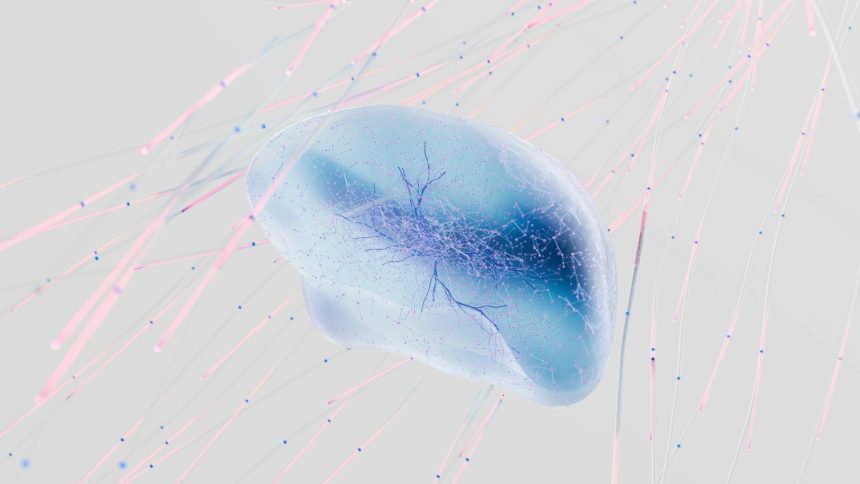Adaptive Semantic Web Protocols for Neuroscience: Unlocking Brain Data
The intricate workings of the human brain present one of science’s most profound challenges. To truly understand it, we need to integrate vast, diverse datasets from myriad sources. This is where adaptive semantic web protocols for neuroscience emerge as a game-changer, offering intelligent, flexible, and powerful ways to connect and interpret complex brain data. These protocols aren’t just about organizing information; they’re about creating dynamic, interconnected knowledge graphs that evolve with our understanding.
The Data Deluge in Neuroscience
Neuroscience research generates an overwhelming amount of data. From fMRI scans and EEG recordings to genetic sequences, behavioral observations, and molecular pathways, the sheer volume and heterogeneity pose significant hurdles. Traditional databases and static ontologies often struggle to keep pace with the rapid advancements and the need for interdisciplinary collaboration. This data fragmentation can slow down discoveries, making it difficult for researchers to find, share, and combine relevant information effectively.
What Are Adaptive Semantic Web Protocols?
At their core, semantic web protocols enable machines to understand the meaning of data, not just its syntax. Adaptive semantic web protocols take this a step further. They are designed to dynamically adjust and learn from new information, infer relationships, and resolve ambiguities in real-time. This adaptability is crucial in a field like neuroscience, where new discoveries constantly refine our models and understanding.
Key Components of Adaptive Semantic Web Protocols
- Ontologies: Formal representations of knowledge within a domain, defining concepts, properties, and relationships.
- Reasoning Engines: Software that can infer new facts and relationships from existing data based on defined rules and ontologies.
- Linked Data Principles: Guidelines for publishing and sharing structured data on the web, enabling seamless integration.
- Machine Learning Integration: Algorithms that allow the system to learn from data, improve its understanding, and adapt its protocols over time.
Revolutionizing Neuroscience Data Integration
The application of adaptive semantic web protocols in neuroscience promises to dismantle long-standing data silos and foster unprecedented levels of interoperability. Imagine a system where an experimental result from a single neuron study can be automatically linked to relevant genetic predispositions and behavioral outcomes, all understood by the machine.
Breaking Down Silos with Intelligent Linking
These protocols facilitate the creation of rich, interconnected knowledge graphs. Researchers can query these graphs to uncover hidden patterns and correlations across disparate datasets. For instance, linking proteomics data with neuroimaging findings can illuminate the molecular underpinnings of neurological disorders. This level of integration is essential for developing targeted therapies and diagnostic tools.
Enhancing Collaboration and Reproducibility
By providing a standardized, machine-readable framework for data description and linkage, adaptive semantic web protocols significantly enhance collaboration among research institutions worldwide. They promote data reproducibility by ensuring that data can be understood and re-analyzed by others, regardless of the original experimental setup or software used. This is a cornerstone for robust scientific progress.
Use Cases and Future Potential
The potential applications of adaptive semantic web protocols in neuroscience are vast and continue to expand.
- Drug Discovery: Accelerating the identification of potential drug targets by integrating information on molecular pathways, disease mechanisms, and existing drug compounds.
- Personalized Medicine: Enabling the development of tailored treatments by analyzing individual patient data, including genetic makeup, brain activity, and clinical history.
- AI-Powered Diagnostics: Assisting in the early and accurate diagnosis of neurological conditions by processing complex patterns in medical imaging and patient records.
- Understanding Brain Development and Aging: Creating longitudinal models that track changes in brain structure and function over time, from childhood to senescence.
Challenges and Considerations
While the benefits are immense, implementing these advanced protocols comes with its own set of challenges. Developing comprehensive and widely accepted ontologies for the multifaceted domain of neuroscience is a significant undertaking. Furthermore, ensuring data privacy and security when integrating sensitive patient information requires robust ethical frameworks and technical safeguards. The computational resources needed for advanced reasoning and machine learning can also be substantial.
Despite these hurdles, the trajectory is clear. The future of neuroscience research is intrinsically linked to our ability to manage, integrate, and intelligently interpret its ever-growing data landscape. Adaptive semantic web protocols are not just a technological advancement; they are a fundamental shift in how we can approach the complex enigma of the brain.
For a deeper dive into the technical underpinnings of semantic web technologies and their impact on scientific research, explore resources like the W3C Semantic Web standards. Understanding how these standards are applied in practice can further illuminate their potential.
Conclusion
Adaptive semantic web protocols for neuroscience are pivotal in transforming raw data into actionable knowledge. By enabling machines to understand, link, and learn from diverse brain data, these intelligent systems are paving the way for accelerated discoveries, enhanced collaboration, and a more profound understanding of the human brain. Embracing these technologies is key to unlocking the next frontier in neuroscience.
© 2025 thebossmind.com
Featured image provided by Pexels — photo by Google DeepMind







